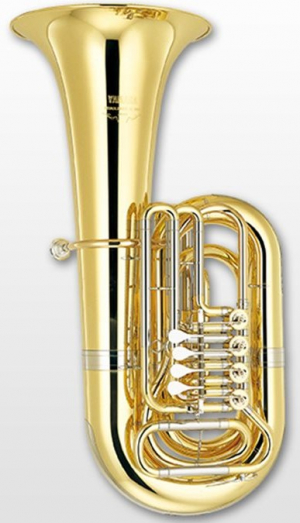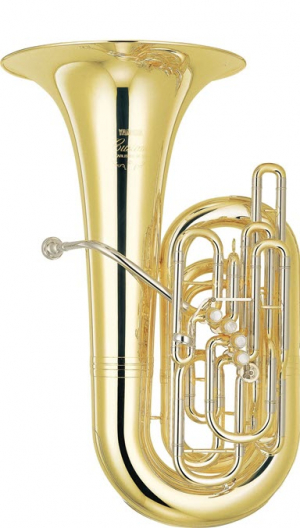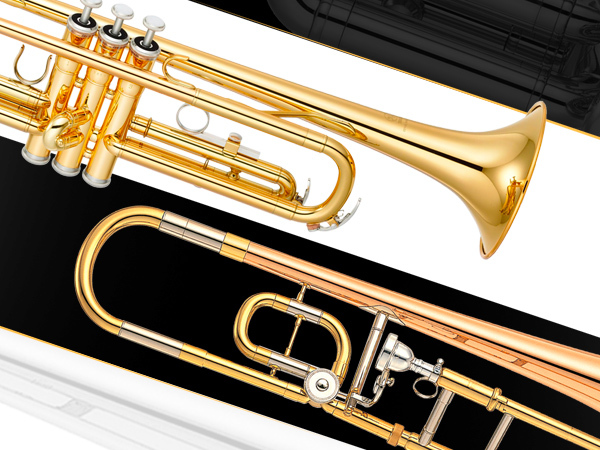What are the Different Kinds of Tubas?
Here’s what makes each one special.
When it comes to brass instruments, there seems to be something of a hierarchy. Trumpets are bright and authoritative, always right out front. With their long slides, trombones are both visually arresting and fun to play. But tubas? Too often they are thought of as the kid Little League coaches stick out in right field. But, in actuality, the lowest-pitched instrument in the brass family plays a vital role.
There are concert tubas, marching band and jazz ensemble tubas; tubas with bells pointed upward, backward and frontward; tubas of different finishes and tuned to different pitches. In this article, we’ll describe the difference between them all … but first, a look at their origins and similarities.
ORIGINS
Tubas have a long and fascinating history. The first example of the instrument — the basstuba — was patented on September 12, 1835. However, there was a milestone event that predated this: the invention of valves in the 1820s. These allowed the player to easily change the length of internal tubing and thus significantly extend note range — a technological breakthrough that was not only swiftly incorporated into existing brass instruments like the trumpet and French horn but also led to the creation of several new instruments, including the tuba. The original basstuba incorporated five valves that were similar to modern piston valves (see the next section for more information).
The word “tuba” comes from the Latin word for “tube.” (The term has also been used for an ancient bronze instrument used in Greece and Rome, as well as a blanket term for any horn.) The original was called a “basstuba” since it offered a lower register than other horns of the era. Before the invention of valves, lower-register (valveless) instruments included the ophicleide, a long wide brass instrument invented in 1817 that used metal caps called “keys”; and the serpent, a long, windy tube-like instrument. Adolphe Sax’s low-register “saxhorns” were also popular around the inception of the basstuba. During the American Civil War, for example, saxhorns were common. Saxhorns that still exist today are the flugelhorn, baritone horn, the alto/tenor horn and the euphonium (more on those below).
PISTON AND ROTARY VALVES
When it comes to tubas today, there are two main types of valves: piston and rotary. Each alters the length of space that the air (or breath) must travel, which then has an effect on both the pitch and timbre of the note being played.
Rotary valves change the angle of a given tube, resulting in more internal space. Piston valves act much like the pistons in a car engine. Top-action piston valves move vertically and front-action piston valves move more horizontally. The advantage piston valves offer is “half-valve” playing, which experienced players can use to create “in-between” notes — something that’s almost impossible with rotary valves. The downside to piston valves is that they require more maintenance and regular oiling to keep freedom of movement consistent.
Most modern tubas offer three to six valves, with a few rare exceptions. Three-valve tubas are often used by beginners. The sousaphone (see below) also has three valves. More advanced tuba players use four- or five-valved instruments.
Yamaha offers many varieties of both rotary- and piston-valve tubas, including the YBB-641 B♭ tuba (which has rotary valves) and the YCB-822 C tuba (which has piston valves).
SIMILARITIES
Tubas are most often made of brass that’s either unlacquered, lacquered or plated with another metal such as nickel, gold or silver. Sound is produced by buzzing your lips into the mouthpiece. Anyone (with normal lung capacity) is encouraged to give it a try!
The instrument is comprised of lengthy tubing and is made with a conical bore, meaning the tube’s diameter widens as it moves towards the bell. Tubas used in military bands historically had bells that pointed backwards. Tubas used in recording studios have bells pointed frontwards and tubas used in orchestras have bells pointed skyward.
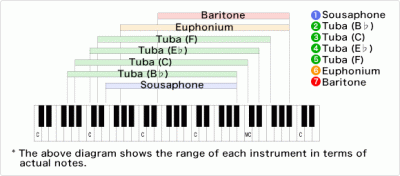
Today, the most common tubas are found in four pitches: B♭, C, E♭ and F, with each variety determined by the instrument’s tube length. Most modern music composed for the tuba is written in the bass clef, though some, like that for British-style brass bands, can be written in the treble clef.
B♭ TUBA
The tube of a B♭ tuba is the longest of the varieties listed here — it measures 18 feet (5.5 meters) long — and therefore it’s the lowest-pitched of the four. B♭ tubas are common in marching bands and full orchestras and are the instruments most beginners start on. However, they come in a range of weights, so factors like a player’s size and strength can determine which to choose. But no matter which he or she does, the tone and depth of sound of a B♭ tuba (also known as a BB♭ tuba) is unmistakable.
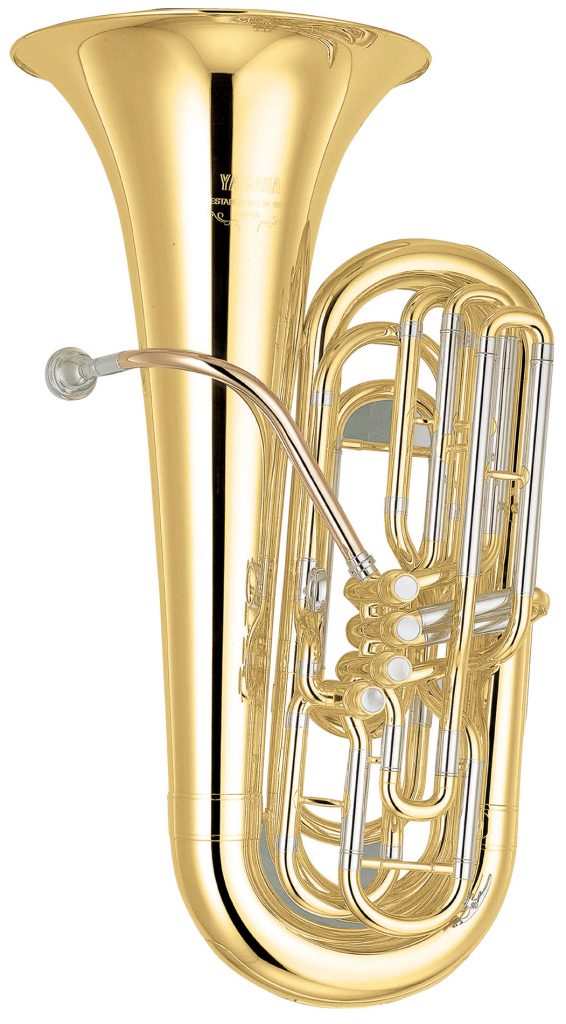
C TUBA
While the B♭ tuba is the most common of the four, the C tuba comes in as a close second, and is mostly found in orchestras and wind ensembles. Its tube is 16 feet (4.9 meters) long and so a C tuba is a bit smaller and pitched slightly higher than its B♭ counterpart. Compared to B♭ tubas, C tubas (also known as a CC tubas) have a faster response time and a clearer tone. Both B♭ and C tubas can also be known as “contrabass tubas.”
E♭ TUBA
The tube of an E♭ tuba is 13 feet (4 meters) long. As a result, the instrument often plays an octave above the BB♭ tubas. It is used in brass bands and some military bands, and is prized for its extended note range. The E♭ tuba is also a good solo instrument for experienced professional players who want an instrument that is even more responsive and clearer tonally than a C tuba.
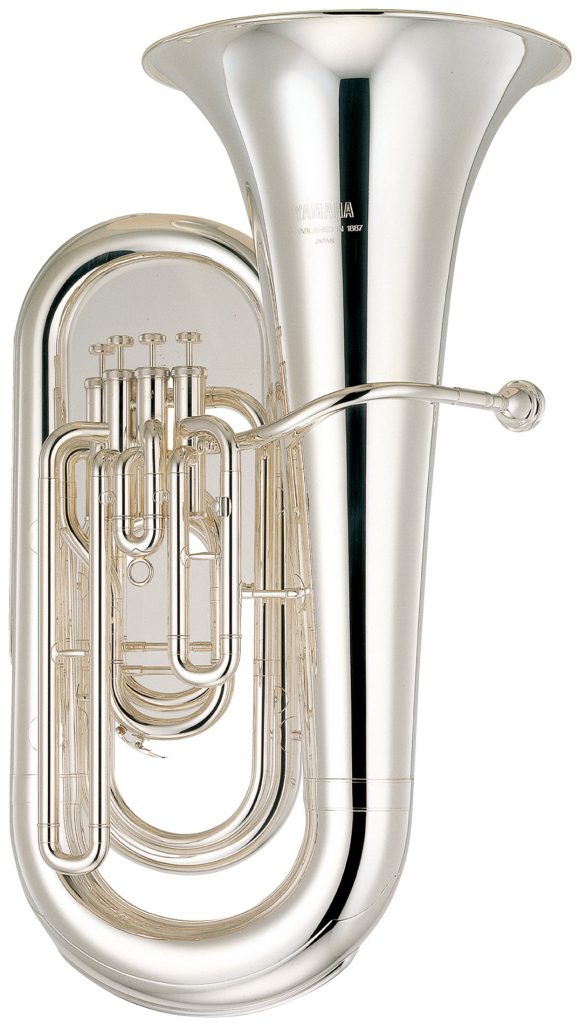
F TUBA
With an interior tube measuring 12 feet (3.7 meters) long, the F tuba is the shortest, clearest and highest-pitched of the four. Because of its high range, the instrument is often used by professional players as a solo instrument. In Europe, the F tuba is a standard orchestral staple. An F tuba is sometimes equipped with a fifth or even sixth valve to assist in attaining a lower range of notes.
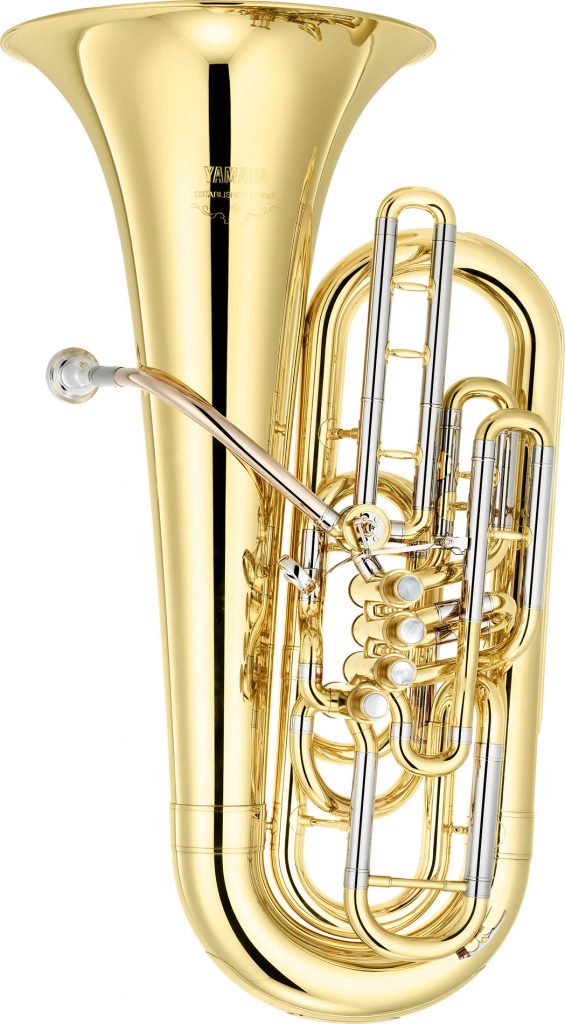
OTHER SIMILAR HORNS
Euphonium
This is a smaller instrument than any of the four tubas and offers a higher range than its counterparts — it’s essentially a B♭ tuba pitched an octave higher, but with a conical inner tube. The euphonium is also known as a “tenor tuba,” though traditionally tenor tubas are thicker and more tapered.
Baritone Horn
Usually equipped with three piston valves, this B♭ horn has the same tonal range as the euphonium; however, the timbre is brighter largely because a baritone’s inner tubes are considerably thinner. In the U.S., a euphonium with the bell and pistons facing forward is sometimes called a baritone to differentiate it from a true euphonium.
Sousaphone
Created by the famed American conductor and composer John Philip Sousa , the sousaphone looks much like a tuba and is featured prominently in marching bands, usually pitched to B♭. It’s a large, heavy instrument that wraps around a player’s body. The sousaphone incorporates three valves and has a large forward-facing bell that rests over the player’s right shoulder.
Cimbasso
Rare today, this historical instrument looks almost like a trombone bent at a 90-degree angle. It has the same range as an F tuba, though other versions exist to fit the range of BB♭, CC and E♭ tubas.
Subcontrabass Tuba
Even larger and weightier than BB♭ contrabass tubas, these varieties offer the lowest range, but are extremely rare.











